Hoarding is a complex and challenging issue that affects many people. While some may view it as a simple matter of excessive clutter, the reality is far more complicated. It can be a disorder that affects every aspect of a person’s life, from mental health to relationships with others.
To truly understand hoarding, it’s important to be aware of the five levels and their unique effects. These levels range from mild to severe, each presenting its own challenges and difficulties. Understanding these levels is critical to properly addressing and treating the issue at hand, as different approaches may be needed depending on the severity of the disorder.
Additionally, it’s worth noting that hoarding is not simply a matter of being messy or disorganized. Many people who struggle with this, experience intense emotional attachments to their belongings, making it difficult for them to part with even the most seemingly insignificant items. This emotional attachment can significantly hinder seeking help or making changes.
Level One
The first level of hoarding, also known as a “cluttered home,” can be a tricky situation to identify. Often, the hoarder’s possessions are stacked or arranged in an organized manner, making it appear that they have everything under control. However, upon closer inspection, one can observe that the storage rooms and cabinets are packed to the brim. In such instances, it can be hard to find anything, and getting rid of something may cause them to feel uneasy or uncomfortable. Nevertheless, these feelings do not significantly impair their life.
One of the characteristics of this phase is that there is still room to move around the home. The person has not yet accumulated so many things that it impedes their ability to navigate the house or property. However, the signs of disorganization are still visible, making it apparent that there are more possessions than they can adequately manage. It’s important to note that these early stages of hoarding should not be ignored, as they can quickly spiral out of control.
When identifying if the problem is still at level one, there are several key elements to look out for:
- The clutter must be manageable, meaning it doesn’t pose significant safety hazards or risks.
- No signs of decomposed food should be visible, as this can cause health hazards and other complications.
- There should be no noticeable odors emanating from the home, as this can indicate a more severe hoarding problem.
Level Two
As the hoarding levels progress, so does the impact on the hoarder’s life. Level two is where things start to get serious. The person’s clutter has now taken over the home, causing limited space to move around, making it challenging to navigate through hallways and staircases. They may be forced to climb over piles of belongings to move from one room to another.
At this level, appliances may also start to break down due to clutter and lack of maintenance. It’s not uncommon to have at least one appliance out of order. The accumulation of belongings may also cause a room or multiple rooms to become completely blocked, leading to wasted space in the house. It can be detrimental to the quality of life, as they may have trouble finding a place to relax or complete daily activities.
In many cases, hoarders at this level may also experience social isolation, as they may not allow anyone to visit their house due to embarrassment from the clutter and disorganization. This can lead to a lack of social interaction and support, making it even more challenging for the hoarder to address their behavior.
Need Hoarding Cleanup? We’re Just a Call Away
& Ready to Respond Quickly!

Level Three
The clutter and disorganization reach extreme levels, making the person’s living space increasingly uninhabitable. Basic amenities like the bathroom, kitchen, and bedroom may no longer be accessible, leaving the hoarder with few options but to live amongst their possessions. Cramped and cluttered corners and piles of hoarded items may now serve as the makeshift bed.
The health and safety hazards of the person’s situation are now severe. Mold and vermin infestations have become a reality, and the filth and squalor in the home have created an unsafe and unsanitary environment. The presence of pests and insects has added another layer of difficulty for the hoarder, who struggles to maintain a healthy living environment.
The clutter has now escalated to the point where it is visible from the street. Litter and garbage are piled up in several areas of the house. They may be living in complete isolation, avoiding friends and family due to the shame and embarrassment caused by their living conditions.
Several home appliances may be out of order, adding to the hoarder’s struggles in maintaining their living conditions. Signs of structural damage may also be present, posing a significant safety risk.
Level Four
The clutter has become so overwhelming that piles of objects tower over the hoarder, creating a risk of them toppling over and causing serious injury or even death. Their living conditions have deteriorated to the point where basic amenities are no longer accessible. Bathing, cooking, and even walking around the house have become impossible due to the sheer volume of clutter. The hoarder is left in an environment that is not only hazardous but unsanitary as well, with rotten food, rodents, insects, and other pests present throughout the home.
The person’s situation has become so dire that they are often on the verge of collapse, both physically and mentally. The weight of their possessions and the constant stress of living in such chaotic conditions have taken a toll on their well-being.
In addition to the health and safety risks, the accumulated possessions have also caused structural damage to the house, including sewage problems and unusable rooms. Mold growth and mildew are also common at this level, adding to dangerous living conditions.
Level Five
Level five is the most extreme and dangerous form of hoarding. The living conditions have reached a point where their life is at risk due to the overwhelming amount of clutter and waste in their home. The person can no longer function in society, as their home has become entirely isolated from the outside world.
The living space is now impossible to live in, and they are exposed to numerous health hazards such as mustiness, toxic fumes, and poor air quality. The heaps of clutter and junk present a considerable risk of falls, with the person steering narrow pathways and hazardous walkways in their home. In addition, there is a high risk of fire hazards due to the hoarder’s inability to maintain proper electrical wiring and the presence of flammable materials.
Professional help is essential at this level to ensure safety and well-being. A team of trained professionals can assess the situation, develop a plan of action, and provide necessary cleaning services. Nevertheless, due to the severity of the hoarding, the cleaning process may take several days, weeks, or even months to complete.
It is critical to approach the hoarder with compassion and understanding as they may be resistant to seeking help. The person may feel a sense of shame or embarrassment about their living conditions, and it may take time to build trust and establish a rapport with them.
Takeaway
As these five levels explain, hoarding disorder is a severe mental illness that can lead to devastating consequences for that person and their loved ones. It is essential to approach the situation with empathy and compassion.
At LifeCycle Transitions, we understand the complexity of the disorder and offer a range of professional hoarding cleanup services to help individuals reclaim their homes and lives. Our team of compassionate experts provides personalized and non-judgmental support to hoarders and their families, from assessment to cleaning and organizing. We believe that everyone deserves to live in a clean, safe, and clutter-free home, and we are committed to helping hoarders achieve this goal.
If you or someone you know is struggling with hoarding disorder, don’t hesitate to reach out to us for help. With our guidance and support, we can help you take the first step towards a healthier, happier life.
